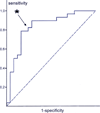Venous oxygen saturation as a physiologic transfusion trigger
- PMID: 20236457
- PMCID: PMC2887106
- DOI: 10.1186/cc8854
Venous oxygen saturation as a physiologic transfusion trigger
Abstract
This article is one of ten reviews selected from the Yearbook of Intensive Care and Emergency Medicine 2010 (Springer Verlag) and co-published as a series in Critical Care. Other articles in the series can be found online at
Figures


Similar articles
-
Physiologic transfusion triggers.Best Pract Res Clin Anaesthesiol. 2007 Jun;21(2):173-81. doi: 10.1016/j.bpa.2007.02.003. Best Pract Res Clin Anaesthesiol. 2007. PMID: 17650770
-
The oxygen supply-demand balance: a monitoring challenge.Best Pract Res Clin Anaesthesiol. 2013 Jun;27(2):201-7. doi: 10.1016/j.bpa.2013.06.001. Best Pract Res Clin Anaesthesiol. 2013. PMID: 24012232 Review.
-
The monitoring of venous saturations of oxygen in children with congenitally malformed hearts.Cardiol Young. 2009 Feb;19(1):34-9. doi: 10.1017/S1047951109003539. Epub 2009 Jan 20. Cardiol Young. 2009. PMID: 19154627 Review.
-
Mixed venous oxygen saturation monitoring revisited: thoughts for critical care nursing practice.Aust Crit Care. 2012 May;25(2):78-90. doi: 10.1016/j.aucc.2011.10.001. Epub 2011 Nov 22. Aust Crit Care. 2012. PMID: 22112670
-
Oxygen consumption and mixed venous oxygen saturation monitoring during orthotopic liver transplantation.J Clin Monit. 1992 Jan;8(1):7-11. doi: 10.1007/BF01618080. J Clin Monit. 1992. PMID: 1538256
Cited by
-
Red blood cell transfusion affects microdialysis-assessed interstitial lactate/pyruvate ratio in critically ill patients with late sepsis.Intensive Care Med. 2012 Nov;38(11):1843-50. doi: 10.1007/s00134-012-2635-8. Epub 2012 Jul 10. Intensive Care Med. 2012. PMID: 22777518
-
Assessment of oxygen extraction rate changes following red blood cell transfusion in the intensive care unit: a protocol for a prospective observational non-interventional study.BMJ Open. 2023 Aug 30;13(8):e074413. doi: 10.1136/bmjopen-2023-074413. BMJ Open. 2023. PMID: 37648379 Free PMC article.
-
Cardiac output drives tolerance of acute hemolysis.Intensive Care Med. 2018 Aug;44(8):1362-1363. doi: 10.1007/s00134-018-5244-3. Epub 2018 Jun 13. Intensive Care Med. 2018. PMID: 29947883 No abstract available.
-
Clinical Approach to the Patient in Critical State Following Immunotherapy and/or Stem Cell Transplantation: Guideline for the On-Call Physician.J Clin Med. 2019 Jun 20;8(6):884. doi: 10.3390/jcm8060884. J Clin Med. 2019. PMID: 31226876 Free PMC article. Review.
-
Central venous oxygen saturation during cardiopulmonary bypass predicts 3-year survival.Interact Cardiovasc Thorac Surg. 2013 Jan;16(1):21-6. doi: 10.1093/icvts/ivs363. Epub 2012 Oct 12. Interact Cardiovasc Thorac Surg. 2013. PMID: 23065747 Free PMC article.
References
-
- Vallet B, Singer M. In: Patient-Centred Acute Care Training. First. Ramsay G, editor. European Society of Intensive Care Medicine, Brussels; 2006. Hypotension.
Publication types
MeSH terms
Substances
LinkOut - more resources
Full Text Sources
Medical

